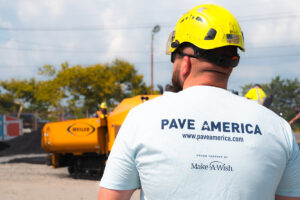Although the terms cement and concrete are often used interchangeably, there is actually a distinct difference between the two products. It’s no surprise that people mix up these two sedimentary mixes, as they often look like the same finished product. Below we are breaking down the differences between cement and concrete, so you can better familiarize yourself with both products!
The main difference between cement and concrete is that cement is actually an ingredient of concrete. Concrete is one of the most commonly used construction materials for both commercial and residential projects around the world. The strength and durability of concrete makes it the preferred foundational building material globally.
So what is concrete?
Concrete is a mixture of different aggregates and paste. The aggregates are typically sand, crushed stone and gravel. These aggregates make up around 75% of concrete. When selecting aggregate materials, they must be very clean to not compromise the organic matter and strength of the concrete.
The paste is water mixed with cement. This paste mixture makes up around 10-15% of the concrete. Much like the aggregate materials, the water used to create concrete must be very clean before mixing.
When the cement and water are mixed, then hardened, the mixture goes through a process called hydration. Hydration is when the cement mix binds to the aggregate to create a rock-like mass. This mass continues to harden for years, meaning that concrete actually gets more durable the older it gets.
So if cement is just an ingredient within concrete, then what exactly is cement made of? We’re glad you asked!
Cement is a binder material made from a mixture of aluminum, calcium, iron, silicon and other substances found in limestone, shells, chalk, clay, iron ore and silica sand. When heated to an extremely high temperature, these materials create a rock-like substance. This substance is then ground into an extremely fine powder called cement. Cement can be used on it’s own and is often applied to masonry surfaces or used as grout in smaller construction projects. While it does create a smooth finish, using cement on its own is prone to cracking.
While the terms cement and concrete are often used interchangeably, hopefully now you have a better understanding of how these materials are different. Cement is just one component of concrete and concrete is typically the main material used for large commercial projects. Identifying the difference between these two materials is key to understanding how these products work together in the completion of a project.
Work with Pro-Pave, Inc.
Pro-Pave, Inc. has established a reputation as one of the Washington, DC area’s most reliable paving companies. Since 2001, Pro-Pave has provided asphalt paving, concrete paving, and property maintenance services to various customers, including churches, colleges and universities, retailers, HOAs, and more.
We are always up to date on the latest news in paving. To find out more about how we can help you, contact Pro-Pave today. Visit our website, or give us a call at (703) 433-9500.



